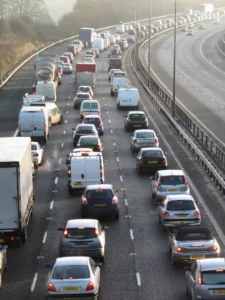INRIX’s recently released 2023 Global Traffic Scorecard has identified and ranked congestion and mobility trends in more 900 than cities, across 37 countries. The report provides a range of metrics to help cities understand and address congestion issues at a local, national, and global level.
INRIX’s research found traffic congestion around the world continued to grow in 2023. Of all 947 urban areas analyzed, delays increased in 78% and decreased in 19%, with 3% unchanged.
New York City topped the global ranking, followed by Mexico City and London. US cities held two spots in the top five and four in the top 10.
In general, European urban areas experienced the quickest “rebound” in traffic from COVID-19, and still outpaced the United States in terms of returning to 2019 norms. Two-thirds of European cities have already met or exceeded pre-COVID levels of delay, whereas just 40% of US urban areas have the same distinction.
Last year’s number one, London, and number two, Paris, took the top spots in the European ranking again this year, with drivers losing 99 and 97 hours in congestion, respectively.
There was a noticeable upswing in traffic congestion in the Netherlands, pushing the urban areas of Utrecht (ranked 10th in Europe), Leiden (13th), Amsterdam (16th), and The Hague (17th) onto the 2023 top 25. Additionally, urban areas in Ireland, Portugal, Czech Republic, and Finland also saw significant increases in traffic delay in 2023, while Denmark, Hungary, Belgium, Germany and the UK saw single digit growth. At a country level, none of the countries analyzed in Europe encountered year on year delay decreases in 2023.
Visit INRIX’s interactive traffic scorecard page to explore this year’s findings and download the full report to get a detailed analysis of transportation in 2023.






















